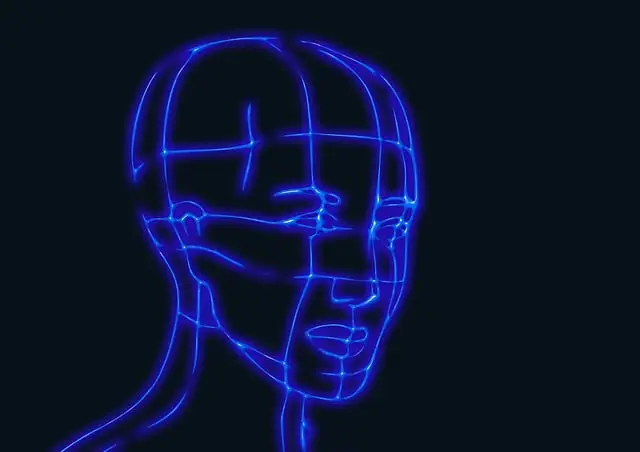Kratom-Assisted Mental Clarity has gained attention as a potential aid in addiction recovery, particularly for opioid addiction, due to its interaction with opioid receptors that may alleviate withdrawal symptoms and cravings. The active alkaloids in kratom, such as mitragynine and 7-hydroxymitragynine, have been studied for their effects on mental clarity, focus, and decision-making, which could complement traditional recovery programs. However, the legal status of kratom varies by state in the U.S., creating obstacles for its consistent use in treatment. The ethical implications of using kratom necessitate a careful weighing of its potential cognitive benefits against the risks of dependency and adverse effects. Ongoing research is crucial to fully understand kratom's impact on mental clarity and its role in addiction treatment, ensuring that any clinical application is based on solid scientific evidence and ethical considerations. This will help healthcare providers offer informed, safe, and effective care to those seeking recovery from substance use disorders.
Kratom, a tropical tree’s leaves, has emerged as a potentially transformative element in addiction treatment and recovery. This article delves into the promising role of Kratom-Assisted Treatment for sharpening mental clarity during recovery. Exploring the scientific underpinnings of its impact on cognitive functions, we examine how Kratom could become an integral component in substance abuse rehabilitation. However, the legal and ethical dimensions surrounding its application must be carefully navigated to ensure safe and effective integration into treatment programs. Join us as we unravel these complexities and consider the potential benefits of Kratom for those on the path to recovery.
- Unveiling the Potential of Kratom-Assisted Treatment for Enhanced Mental Clarity in Addiction Recovery
- The Scientific Rationale Behind Kratom's Role in Substance Abuse Rehabilitation and Cognitive Sharpness
- Navigating the Legal Landscape and Ethical Considerations of Using Kratom in Addiction Treatment Programs
Unveiling the Potential of Kratom-Assisted Treatment for Enhanced Mental Clarity in Addiction Recovery

Kratom, a naturally occurring plant from Southeast Asia, has garnered attention in the realm of addiction treatment and recovery due to its potential effects on mental clarity. Research is emerging that suggests kratom may offer a unique approach to assisting individuals in their recovery journey. Mitragynine, one of the key alkaloids found in kratom leaves, is believed to interact with the brain’s opioid receptors, which could help alleviate withdrawal symptoms and reduce cravings associated with substance abuse. This interaction may contribute to heightened mental acuity and focus, a critical aspect for those navigating the challenges of recovery. Proponents argue that kratom-assisted treatment could enhance cognitive function and promote mental clarity, allowing individuals to engage more effectively in therapeutic activities and daily responsibilities.
The potential benefits of kratom-assisted mental clarity in addiction recovery are multifaceted. By potentially reducing the fog of withdrawal and diminishing the mental cloudiness that often accompanies substance dependency, kratom may facilitate a clearer state of mind. This mental lucidity is not only conducive to better decision-making but also supports the cognitive processes necessary for sustained behavioral change. As research continues to evolve, it is imperative to consider the therapeutic potential of kratom within structured treatment programs, ensuring that its use is monitored and regulated to maximize safety and efficacy in aiding individuals on their recovery paths.
The Scientific Rationale Behind Kratom's Role in Substance Abuse Rehabilitation and Cognitive Sharpness

Mitragyna speciosa, commonly known as kratom, has garnered attention in the realm of addiction treatment and cognitive enhancement due to its unique alkaloid profile and pharmacological effects. Preclinical studies suggest that kratom interacts with opioid receptors in the brain, offering potential for mitigating withdrawal symptoms and cravings associated with substance abuse, particularly from opioids. This interaction can be pivotal in managing the challenging symptoms of withdrawal, which are often a significant barrier to successful recovery. Moreover, kratom’s influence on neurotransmitter systems may contribute to an individual’s mental clarity and focus. The mitragynine and 7-hydroxymitragynine compounds found within kratom leaves are believed to enhance cognitive function by stimulating the nervous system and promoting a state of calm attentiveness. This dual effect—reducing withdrawal symptoms while enhancing cognitive sharpness—makes kratom a subject of considerable scientific interest as an adjunct therapy in addiction treatment programs. As research progresses, it is crucial to monitor the outcomes of kratom-assisted mental clarity and its implications for recovery and sustained abstinence from addictive substances.
Navigating the Legal Landscape and Ethical Considerations of Using Kratom in Addiction Treatment Programs

Kratom, a botanical derivative from the leaves of Mitragyna speciosa, has garnered attention in the realm of addiction treatment and recovery due to its potential for promoting Kratom-Assisted Mental Clarity. As an alternative to traditional medications, Kratom is being explored for its alkaloid properties that may help manage withdrawal symptoms and cravings associated with substance use disorders. However, navigating the legal landscape of Kratom remains complex; it is subject to varying regulations across different jurisdictions within the United States. The legality of Kratom is a moving target, with some states having banned its sale, while others regulate it under controlled substances legislation. This patchwork of laws poses significant challenges for treatment programs aiming to incorporate Kratom into their recovery protocols.
Ethical considerations further complicate the use of Kratom in addiction treatment. The ethical obligation to provide evidence-based treatments necessitates rigorous scientific evaluation, yet Kratom’s status as a Schedule I controlled substance in some areas restricts research and clinical trials. This regulatory hurdle impedes the accumulation of empirical data that is crucial for establishing the efficacy and safety of Kratom in addiction treatment. Moreover, healthcare providers must weigh the potential benefits against the risks associated with Kratom use, including the possibility of dependence and adverse effects. The ethical imperative to do no harm underscores the need for careful consideration and oversight when integrating Kratom into treatment programs, ensuring that patients receive care that is both compassionate and evidence-informed.
Kratom-assisted mental clarity holds promise for individuals navigating the challenging path of addiction recovery. The scientific community has shed light on how kratom may support cognitive function and enhance mental acuity, which are critical factors in successful rehabilitation. While navigating the legal landscape surrounding kratom’s use in treatment programs requires careful consideration, it is clear that further research and regulatory frameworks are necessary to fully realize its potential benefits. As such, kratom-assisted mental clarity represents a compelling area of exploration in the broader context of addiction treatment and recovery, with the potential to offer an alternative path for many seeking to break free from substance abuse.






